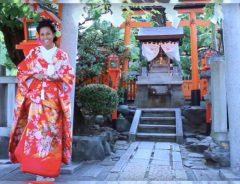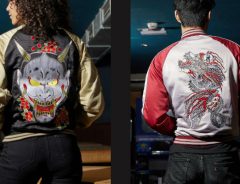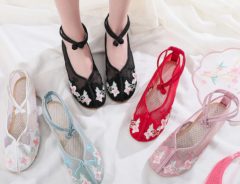- Tags:
- Fashion / Kimono / Mamechiyo / Sheila Cliffe
Related Article
-

What It’s Like To Get The Full Kimono Wearing Experience in Kyoto
-

Show Off Your Yakuza Love With Vintage Kiryu And Majima Sukajan Jackets
-

Wanted: Apprentice to Last Living Expert in Shabari, Artisanal Craft Crucial to Japanese Textile Tradition. All Nationalities Accepted.
-

Fancify your feet with these summer shoes from Village Vanguard
-

Turn Yourself Into The Most Adorable Mecha Ever With These Sloth, Chinchilla, And Otter Themed Body Warmers
-

Japanese Artist’s Furisode-Kimono Dress Shirt Hybrid Comes To Life In Stylish Combo Piece



Kimono is inclusive, and it’s for now. It welcomes everyone, according to kimono pioneer Mamechiyo. Above all, it connects with life and with place, and with architecture.
Sheila Cliffe, for JAPAN Forward
Mamechiyo, like myself, fell in love with kimono at a flea market. She began to buy and sell them at rental galleries along the JR Chuo line.
In 2000, she opened a small vintage kimono shop in Nishi Ogikubo. Of course, I visited it. She became aware that many women loved the Taisho period kimono she was selling, but they didn’t buy them because they were too small.
Then, in 2003, she published a book which was revolutionary for the time. “Mamechiyo’s Kimono Modern” showed photographs of Mamechiyo in kimono sitting in a launderette, or a CD shop ー in everyday spaces, wearing her Taisho era kimono.
Sheila Cliffe with Creator and Shop Owner Mamechiyo. | © JAPAN Forward/p>
She had pop accessories, and the whole book was designed with a retro attitude. At the time there were few casual kimono photographs being published, so the book had a revolutionary feeling to it. It was before the days when everyone was wired.
Changing Direction to Fit Today’s Women
In 2003 Mamechiyo also started her new brand and shop, “Mamechiyo Modern,” in Nishi Ogikubo. Her brand signature style was to reproduce the designs of the Taisho period on larger sized kimono, in easy to care for polyester. She had a customer in publishing, Tanabe Mayumi, who loved “Mamechiyo Modern,” and a new mook, (magazine book) Kimono Hime (Shodensha, 2003) was born.
© JAPAN Forward/p>
This book spread the aesthetic of Taisho kimono among young people. It was also unique in its design, like a graphic and stylish fashion magazine, rather than a kimono magazine. It was popular with designers and artists as well as kimono fans.
Mamechiyo says that both culture and subculture are important, and she is interested in (and working with) both. If there is no culture, there is no subculture, so both are necessary for culture to stay healthy.
(...)
Written by Japan ForwardThe continuation of this article can be read on the "Japan Forward" site.
[Kimono Style] Creator Mamechiyo’s Kimono are for Today’s World